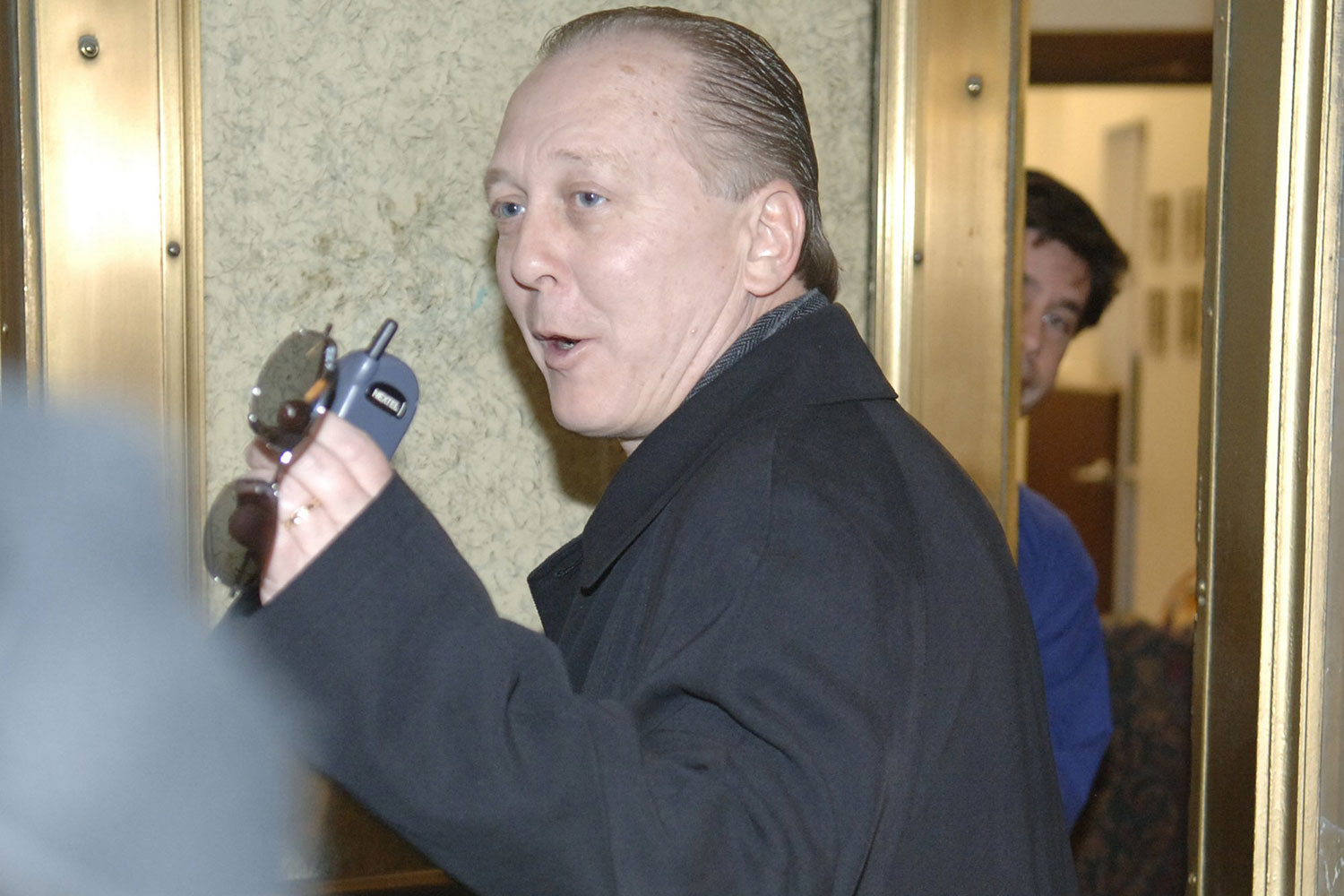“Wear the jacket” is a uniquely Chicago phrase. It means to take the blame, or to take the fall, and it generally applies to an underling whose career is sacrificed to save his boss’s skin. In an episode of the Sun-Times’s “Chicagopedia,” columnist Neil Steinberg explained the term’s origin:
“Jacket is a very old phrase for a man, so if you got beaten up, you got your jacket dusted. If you were stealing things, you were lining your jacket; but that isn’t where the phrase ‘wear the jacket’ came from. It came from prisoner, police slang, where a jacket was the cardboard or paper covering around a criminal case, and so if you were being prosecuted, you were ‘given a jacket’ or ‘wore a jacket.’ It’s been used for over 20 years, and I noticed the headline in the Sun-Times from 20 years ago, ‘Does Daley Ever Wear the Jacket?’ The answer, of course, is no.”
Daley never wore the jacket because he was the mayor. But others who worked for him, or his father, were fitted with jackets during political scandals or civic disasters. Here is a short history of jacket-wearers in Chicago.
Timothy O’Connor
In the late 1950s, eight officers in Chicago Police Department’s Summerdale district helped professional burglar Richard Morrison break into houses on the North Side. The cops not only acted as lookouts for Morrison, but helped him haul away the loot, then divided it amongst themselves. Five cops went to prison. According to Mike Royko’s Boss, Mayor Richard J. Daley was blamed for the scandal, so “[h]e had to shift the blame, find a sacrificial victim.” That turned out to be the police chief, Timothy O’Connor, who was busted down to captain.
“Tim was always telling me how he went home at night and watched TV instead of running around and getting into trouble,” Daley told a press conference, explaining why he had fitted O’Connor for a jacket. “I should have asked him why he wasn’t running around checking his policemen at night instead of watching TV.”
The Summerdale scandal was so bad that O’Connor was replaced with a reformer from way outside Chicago: Orlando W. Wilson, a professor of criminology at the University of California.
John LaPlante
In late 1991, a contractor installing pilings while repairing the Kinzie Street Bridge unknowingly punctured clay soil between the river and an abandoned tunnel once used to transport coal and waste between Loop buildings, allowing water and sediment to seep in. By April, the pressure was so great that the old train network — and the Loop basements it once serviced — began filling with millions of gallons of river water. It took 19 days to pump out the water, at a cost of $2 billion.
Mayor Richard M. Daley chose to place a jacket around the shoulders of John LaPlante, the city’s first transportation commissioner. “Though LaPlante was one of the last players in the drama to learn of the fatal leak, the Mayor decided that the commissioner had been slow about starting emergency repairs,” Chicago magazine reported in 1992. A poll commissioned by the Southtown Economist and Channel 2 found that 60 percent of Chicagoans thought Daley had done a good job of managing the cleanup and that 75 percent thought City Hall bureaucrats should have foreseen and averted the flood. Apparently, the hasty dismissal of John LaPlante served the Mayor’s purpose well.”
LaPlante was one of eight city officials to lose their jobs over Deep Tunnel. That’s a lot of jackets.
James Laski
In the late 1990s and early 2000s, the city spent $40 million a year to hire privately owned dump trucks, at a cost of $50.17 an hour. The companies whose trucks were hired donated $800,000 to politicians, including $108,575 to Mayor Daley. This was embarrassing to Mayor Daley. A Sun-Times investigation found that trucking companies had been paid millions of dollars for no work, and city workers were soliciting bribes to get them into the lucrative Hired Truck Program. Mayor Daley claimed he didn’t know what was going on, but most voters didn’t believe him. Jackets had to be distributed. A total of 44 people were charged with crimes in the scandal. The most prominent was City Clerk James Laski, who pleaded guilty to federal bribery charges for taking $500 to $1,000 a week from trucking companies and was sentenced to two years in prison.
Garry McCarthy
Mayor Rahm Emanuel lured McCarthy from New York to Chicago to implement his “broken windows” strategy of policing, which he had learned from his old boss, New York Police Commissioner William Bratton: cracking down on minor crimes, such as gambling and public urination, to more serious ones. At first, McCarthy got results. In 2014, Chicago recorded 415 murders, its lowest total since the mid-1960s. Then, Officer Jason Van Dyke shot teenager Laquan McDonald outside a Southwest Side Burger King. A video of the shooting, released after Emanuel’s 2015 re-election, showed McDonald had been no threat to Van Dyke. The public blamed the mayor. The mayor’s approval ratings fell to 27 percent. The mayor needed a jacket-wearer to deflect the blame from himself. As with Daley and the Summerdale scandal, that turned out to be his police chief. Daley fired McCarthy, telling reporters that he “has become an issue rather than dealing with the issue, and a distraction.” However, many political observers believe that Emanuel chose not to run for a third term in 2019 because the Laquan McDonald shooting had damaged his popularity. That would make Emanuel the first mayor to wear the jacket himself.



